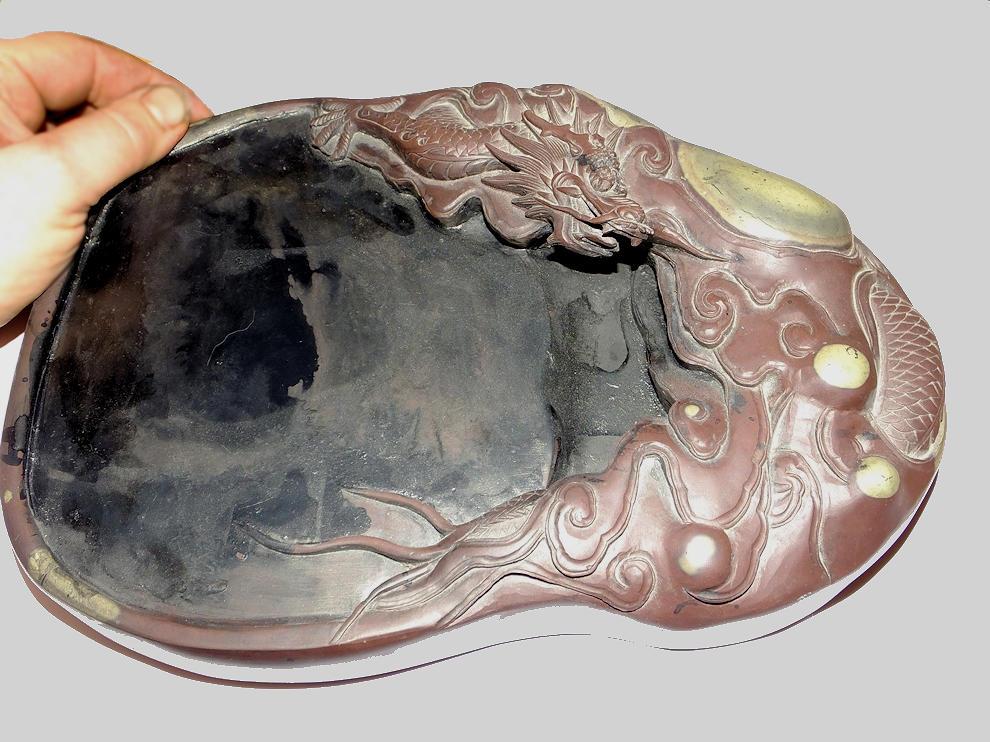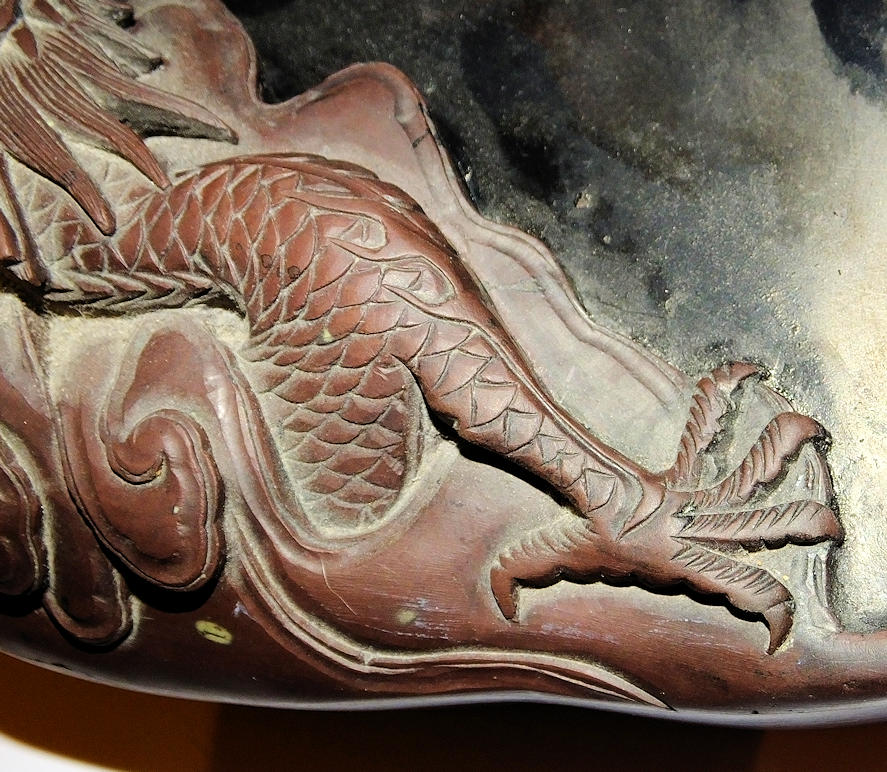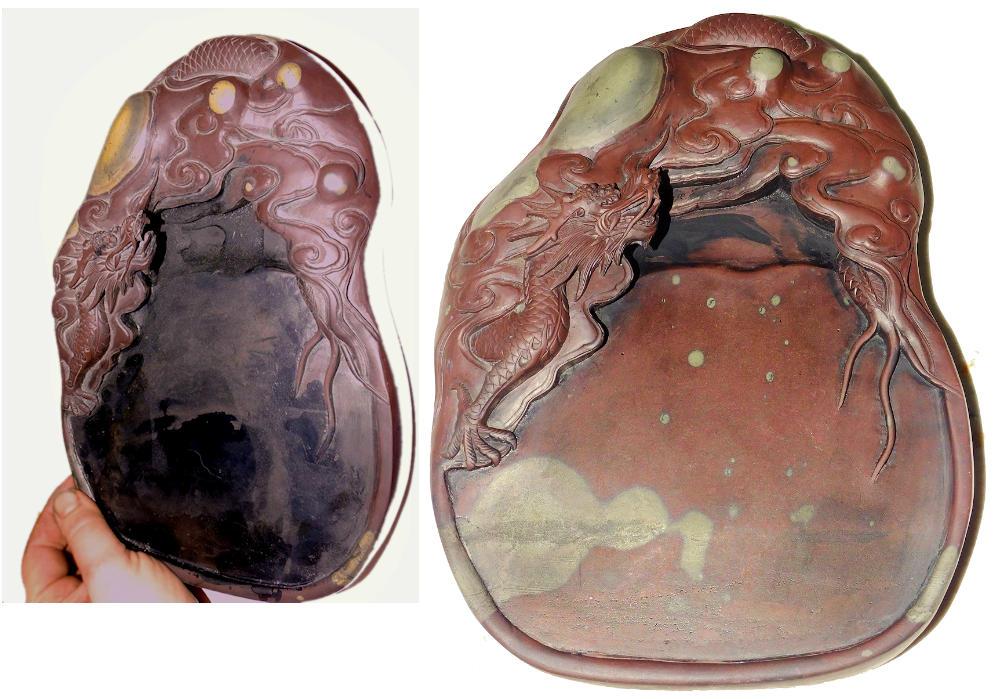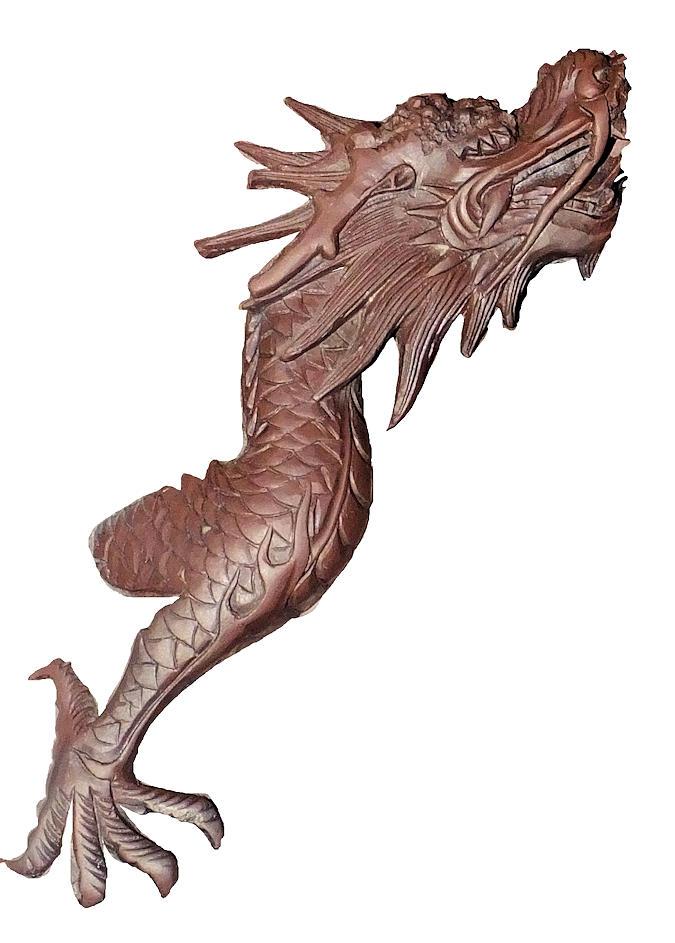Welcome › Forums › Questions & Answers › Cleaning inkstone
Tagged: how to clean inkstone
- This topic has 12 replies, 6 voices, and was last updated 4 years, 4 months ago by
 cwtmovement.
cwtmovement.
-
AuthorPosts
-
-
29th November 2018 at 1:08 pm #19503
 FeliceParticipant
FeliceParticipantHello everybody
Yesterday I was cleaning the inkstones used in class and I was wondering how somebody else cleans them. I do it with a little (shoe)brush and rub the ink under a waterstream away. Is this an effective way or are there better ways?
I’m curious about the ways you do it so please share 🙂
Thanks
-
This topic was modified 6 years, 7 months ago by
 Felice.
Felice.
-
This topic was modified 6 years, 7 months ago by
-
30th November 2018 at 5:16 pm #19505
 cwtmovementParticipant
cwtmovementParticipantI thought I was doing okay with my ink stone by thoroughly washing under running water and wiping with paper towel, sometimes lightly scrubbing with a rough sponge or old toothbrush. But my stone is looking pretty dingy with ink anyway after some years of use. I wonder if anyone has tried the ink stone cubes Inkston sells? I have heard of some who actually grind the stone surface, but I’d be afraid it would hurt the stone’s cutting ability.
-
30th November 2018 at 5:25 pm #19507
 罗雁 LuoYanKeymaster
罗雁 LuoYanKeymasterCould anyone share your experience with our inkstone cleaner? 🙂 Thanks a lot!
-
30th November 2018 at 7:11 pm #19509
 FeliceParticipant
FeliceParticipantThe inkstones we use are round and its sometimes really difficult to get the ink out of the corners, especially if the ink has dried up from previous usage.
Can you like soak the inkstone in case you can’t get rid of all the dried up ink? You can’t use that inkstone-cleaner for a round inkstone right?
-
6th January 2021 at 1:01 am #20906
 PhyllParticipant
PhyllParticipantThe inkstones we use are round and its sometimes really difficult to get the ink out of the corners, especially if the ink has dried up from previous usage.
Can you like soak the inkstone in case you can’t get rid of all the dried up ink? You can’t use that inkstone-cleaner for a round inkstone right?
With all the shared good advice and cautions by others in mind, I can only add that: yes, you can use Inkston’s inkstone cleaner on an inkstone of any shape and size to reach and clean every nook, cranny, edge and crevice. It’s a question of how [to do that] — and also by being mindful of the do’s and don’ts that have been mentioned by the seniors in this community (seniors in knowledge and experience, not age).
That said, first: you’d need to scrape enough fine, dry powder from the mud block. I use the dull edges of a letter opener to scrape the surface and corners of the mud block until I have enough powder to clean with. Second: use a good quality kneaded rubber eraser, which you can tear and shape into any form you wish. The kneaded rubber remains very pliable during the cleaning process — it can be re-shaped without much effort for it to reach every nook and cranny, if needed.
Anyway, I think pictures would speak the idea better (see attached). Again, everything above is said with all the advice and cautions already given by the seniors in this community. A very light touch is always better, albeit it’d take longer to clean/reopen the stone, than to be heavy-handed to save time (and cause damage).
Hope the attached pictures help explain better.



Happy New Year 2021!
~ PS
-
-
1st December 2018 at 4:54 pm #19520
 罗雁 LuoYanKeymaster
罗雁 LuoYanKeymasterThere are more comments from our Inkston Facebook Forum – Chinese fine art and craft stories.
https://www.facebook.com/groups/inkston/
N.C.: Under running water with a soft cloth.
D.W.H.: If they have been left too long and ink has dried a paste of very fine wood ash or ash from a joss stick with a soft toothbrush.
-
11th March 2019 at 8:56 pm #19836
 multapaakkuParticipant
multapaakkuParticipantSoaking indeed can help the old ink come off, and at any rate will not do any harm. I use a piece of loofah sponge for daily cleaning. It’s coarse enough to scrub off leftover ink, yet does not hurt the stone.
I also have the mud block from Inkston. The quality is all right, I haven’t met with any nasty surprises (coarse sand). I find that it can be used to “reopen” the surface of the stone when it has lost its cutting ability, but normally you don’t want to do this all the time. By the way, I don’t exactly see why you could not use it on a round stone – you can always make a paste of the mud with water and polish with it.
If the stone is scratched or otherwise damaged, you can polish the surface using sandpaper, gauge depending on type of stone and desired result. The problem with sandpaper is that it wears the soft and hard parts of the stone equally, leaving a smooth surface with no cutting ability whatsoever. Grinding again with the mud block can help. However scary it sounds, you can even try an abrasive kitchen cleaner that contains milled calcium carbonate. Calcium carbonate is 3 on the Mohs scale, which will leave intact the hard components of the inkstone. The kind used in kitchen products can be a little coarse, though.
Some new inkstones, usually low or mid-range ones, are sold waxed or just plain unfinished, in which case they too will benefit from sandpaper treatment.
-
12th March 2019 at 4:48 pm #19847
 RaggedyBirdParticipant
RaggedyBirdParticipant“The inkstones we use are round and its sometimes really difficult to get the ink out of the corners”
HA ha !!!!!!!!!!!!
OK, if it was not that I knew what you meant this sounded very funny.So, cleaning ink stones. I have one that is over 170 years old. It is a dragon moonstone inkstone. It was given to me by a very old Calligrapher in China I spent some time talking with in 2016. By the very nature of the stone spots it holds ink.
Do not worry about it. If a simple washing up kitchen brush, soft plastic does not move the ink under running water dont worry.
EVEN IF the base bowl of the ink stone is covered in soot, soot will scour soot. Soot will make soot ink. Carbon is sharp.
Dont worry too much.
NONE of my inkstones have FLAT BASES.
So a cleaning stone is no good. And if you are wearing down the top layer of your inkstone you are killing it slowly.
Making it thinner and thinner.
BE WARNED – BE CAREFUL WITH WHAT YOU ARE DOING.
Even if the bowl of the inkstone is starting to go black do not worry. It will still age well and the making of fresh ink will always slowly sand down the surface moving the old ink soot.
It is the nature of ABRASION.
Be intelligent about this.
You WILL kill your stone otherwise.
Be careful.OVERNIGHT SOAKING.
The inkstone below is a beautiful carved Moonstone Dragon Inkstone.
I have soaked this overnight and later Ill include the results of simply soaking an inkstone and using a soft sponge to clean off the “expanded” gluey ink.

Dragon Inkstone BEFORE soaking in warm water overnight. -
This reply was modified 6 years, 4 months ago by
 RaggedyBird.
RaggedyBird.
-
This reply was modified 6 years, 4 months ago by
 RaggedyBird.
RaggedyBird.
-
This reply was modified 6 years, 4 months ago by
-
12th March 2019 at 7:16 pm #19851
 multapaakkuParticipant
multapaakkuParticipant^ These are some excellent points. Even contact with the ink stick slowly abrades the stone, which is why you see old inkstones with a depression in the middle. A good inkstone will keep its edge for a long time, and you should really not clean it with an abrasive unless it’s in dire need of being resurfaced (such as damaged, waxed or – rarely – worn smooth).
-
12th March 2019 at 8:36 pm #19852
 cwtmovementParticipant
cwtmovementParticipantI am so appreciative of RaggedyBird’s comments. My inkstone definitely has some small areas that simply won’t clean, even with water immersion and light rubbing. I suspect the bulk of the staining has come from using the stone to hold some bottled YiDeGe ink that I love using in addition to the ground ink since it saves practice time.
Thinking about the nature of inksticks and how grinding works, it all makes sense. Thank you.
-
12th March 2019 at 10:02 pm #19854
 RaggedyBirdParticipant
RaggedyBirdParticipantAnd here is the stone after soaking in VERY mild soap water warm overnight and covering the stone with a wet sodden cloth.
As you can see there will always be ink in these old stones. The more they age the more particles loosen and fall into the ink and so “pitting” occurs. It is stone. It is the nature of it.
I love this stone. It has pitted areas in the lower 5th.
These rough parts release earth every single time I use this stone. That earth that frees must be under incredible pressure from when the rock was molten lava millions of years ago and every time I use this stone 600,000,000 (six hundred million) year old earth particles go into my calligraphy and paintings. Every time it dries this earth oozes out, just a rough area but since I’ve used this stone in 2006 it has done this.
I would never sell it. I almost did but……… sometimes your soul becomes a part of these treasures.
Also do you really want a stone that looks as though it just came out of the carvers studio? Age gives it the wisdom of your learning and in this the lessons of your learning will be apparent.. .CLEANING THE DRAGON.

As you see, the ink is a permanent fixture of this stone. It is the way of things. Soot is raw carbon. The root of everything on Earth. The stone is still incredibly beautiful.-
This reply was modified 6 years, 4 months ago by
 RaggedyBird.
RaggedyBird.
-
This reply was modified 6 years, 4 months ago by
 RaggedyBird.
RaggedyBird.
-
This reply was modified 6 years, 4 months ago by
 RaggedyBird.
RaggedyBird.
-
This reply was modified 6 years, 4 months ago by
 RaggedyBird.
RaggedyBird.
-
This reply was modified 6 years, 4 months ago by
-
12th March 2019 at 10:13 pm #19859
 RaggedyBirdParticipant
RaggedyBirdParticipantThe Dragon washed up pretty well. 🙂

-
25th February 2021 at 10:23 pm #21075
 cwtmovementParticipant
cwtmovementParticipantI’ve learned so much in this thread. I have just bought a collectible-level inkstone that I want to treat right and all the encouragement and knowledge from those above is much appreciated. Finally, it is so wise to remember that the stone will show your efforts in practice and time, a real testament to your devotion to the art.
-
-
AuthorPosts
- You must be logged in to reply to this topic.
